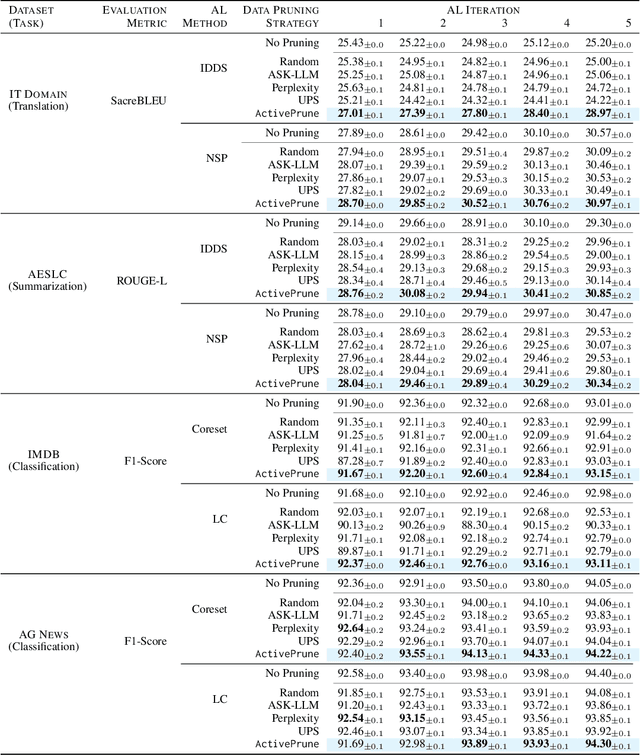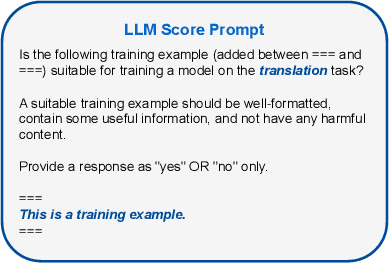Agha Ali Raza
PakBBQ: A Culturally Adapted Bias Benchmark for QA
Aug 13, 2025Abstract:With the widespread adoption of Large Language Models (LLMs) across various applications, it is empirical to ensure their fairness across all user communities. However, most LLMs are trained and evaluated on Western centric data, with little attention paid to low-resource languages and regional contexts. To address this gap, we introduce PakBBQ, a culturally and regionally adapted extension of the original Bias Benchmark for Question Answering (BBQ) dataset. PakBBQ comprises over 214 templates, 17180 QA pairs across 8 categories in both English and Urdu, covering eight bias dimensions including age, disability, appearance, gender, socio-economic status, religious, regional affiliation, and language formality that are relevant in Pakistan. We evaluate multiple multilingual LLMs under both ambiguous and explicitly disambiguated contexts, as well as negative versus non negative question framings. Our experiments reveal (i) an average accuracy gain of 12\% with disambiguation, (ii) consistently stronger counter bias behaviors in Urdu than in English, and (iii) marked framing effects that reduce stereotypical responses when questions are posed negatively. These findings highlight the importance of contextualized benchmarks and simple prompt engineering strategies for bias mitigation in low resource settings.
With a Grain of SALT: Are LLMs Fair Across Social Dimensions?
Oct 16, 2024



Abstract:This paper presents an analysis of biases in open-source Large Language Models (LLMs) across various genders, religions, and races. We introduce a methodology for generating a bias detection dataset using seven bias triggers: General Debate, Positioned Debate, Career Advice, Story Generation, Problem-Solving, Cover-Letter Writing, and CV Generation. We use GPT-4o to generate a diverse set of prompts for each trigger across various genders, religious and racial groups. We evaluate models from Llama and Gemma family on the generated dataset. We anonymise the LLM-generated text associated with each group using GPT-4o-mini and do a pairwise comparison using GPT-4o-as-a-Judge. To quantify bias in the LLM-generated text we use the number of wins and losses in the pairwise comparison. Our analysis spans three languages, English, German, and Arabic to explore how language influences bias manifestation. Our findings reveal that LLMs exhibit strong polarization toward certain groups across each category, with a notable consistency observed across models. However, when switching languages, variations and anomalies emerge, often attributable to cultural cues and contextual differences.
Language Model-Driven Data Pruning Enables Efficient Active Learning
Oct 05, 2024



Abstract:Active learning (AL) optimizes data labeling efficiency by selecting the most informative instances for annotation. A key component in this procedure is an acquisition function that guides the selection process and identifies the suitable instances for labeling from the unlabeled pool. However, these acquisition methods suffer from high computational costs with large unlabeled data pools, posing a roadblock to their applicability on large datasets. To address this challenge and bridge this gap, we introduce a novel plug-and-play unlabeled data pruning strategy, ActivePrune, which leverages language models to prune the unlabeled pool. ActivePrune implements a two-stage pruning process: an initial fast evaluation using perplexity scores from an n-gram language model, followed by a high-quality selection using metrics for data quality computed through a quantized LLM. Additionally, to enhance the diversity in the unlabeled pool, we propose a novel perplexity reweighting method that systematically brings forward underrepresented instances for selection in subsequent labeling iterations. Experiments on translation, sentiment analysis, topic classification, and summarization tasks on four diverse datasets and four active learning strategies demonstrate that ActivePrune outperforms existing data pruning methods. Finally, we compare the selection quality $\leftrightarrow$ efficiency tradeoff of the data pruning methods and demonstrate that ActivePrune is computationally more efficient than other LLM score-based pruning methods, and provides up to 74% reduction in the end-to-end time required for active learning.
The Art of Storytelling: Multi-Agent Generative AI for Dynamic Multimodal Narratives
Sep 19, 2024Abstract:This paper introduces the concept of an education tool that utilizes Generative Artificial Intelligence (GenAI) to enhance storytelling for children. The system combines GenAI-driven narrative co-creation, text-to-speech conversion, and text-to-video generation to produce an engaging experience for learners. We describe the co-creation process, the adaptation of narratives into spoken words using text-to-speech models, and the transformation of these narratives into contextually relevant visuals through text-to-video technology. Our evaluation covers the linguistics of the generated stories, the text-to-speech conversion quality, and the accuracy of the generated visuals.
WER We Stand: Benchmarking Urdu ASR Models
Sep 17, 2024Abstract:This paper presents a comprehensive evaluation of Urdu Automatic Speech Recognition (ASR) models. We analyze the performance of three ASR model families: Whisper, MMS, and Seamless-M4T using Word Error Rate (WER), along with a detailed examination of the most frequent wrong words and error types including insertions, deletions, and substitutions. Our analysis is conducted using two types of datasets, read speech and conversational speech. Notably, we present the first conversational speech dataset designed for benchmarking Urdu ASR models. We find that seamless-large outperforms other ASR models on the read speech dataset, while whisper-large performs best on the conversational speech dataset. Furthermore, this evaluation highlights the complexities of assessing ASR models for low-resource languages like Urdu using quantitative metrics alone and emphasizes the need for a robust Urdu text normalization system. Our findings contribute valuable insights for developing robust ASR systems for low-resource languages like Urdu.
The Fellowship of the LLMs: Multi-Agent Workflows for Synthetic Preference Optimization Dataset Generation
Aug 16, 2024Abstract:This paper presents and evaluates multi-agent workflows for synthetic Preference Optimization (PO) dataset generation. PO dataset generation requires two modules: (1) response evaluation, and (2) response generation. In the response evaluation module, the responses from Large Language Models (LLMs) are evaluated and ranked - a task typically carried out by human annotators that we automate using LLMs. We assess the response evaluation module in a 2 step process. In step 1, we assess LLMs as evaluators using three distinct prompting strategies. In step 2, we apply the winning prompting strategy to compare the performance of LLM-as-a-Judge, LLMs-as-a-Jury, and LLM Debate. In each step, we use inter-rater agreement using Cohen's Kappa between human annotators and LLMs. For the response generation module, we compare different configurations for the LLM Feedback Loop using the identified LLM evaluator configuration. We use the win rate (the fraction of times a generation framework is selected as the best by an LLM evaluator) to determine the best multi-agent configuration for generation. After identifying the best configurations for both modules, we use models from the GPT, Gemma, and Llama families to generate our PO datasets using the above pipeline. We generate two types of PO datasets, one to improve the generation capabilities of individual LLM and the other to improve the multi-agent workflow. Our evaluation shows that GPT-4o-as-a-Judge is more consistent across datasets when the candidate responses do not include responses from the GPT family. Additionally, we find that the LLM Feedback Loop, with Llama as the generator and Gemma as the reviewer, achieves a notable 71.8% and 73.8% win rate over single-agent Llama and Gemma, respectively.
Beyond Uniform Query Distribution: Key-Driven Grouped Query Attention
Aug 15, 2024Abstract:The Transformer architecture has revolutionized deep learning through its Self-Attention mechanism, which effectively captures contextual information. However, the memory footprint of Self-Attention presents significant challenges for long-sequence tasks. Grouped Query Attention (GQA) addresses this issue by grouping queries and mean-pooling the corresponding key-value heads - reducing the number of overall parameters and memory requirements in a flexible manner without adversely compromising model accuracy. In this work, we introduce enhancements to GQA, focusing on two novel approaches that deviate from the static nature of grouping: Key-Distributed GQA (KDGQA) and Dynamic Key-Distributed GQA (DGQA), which leverage information from the norms of the key heads to inform query allocation. Specifically, KDGQA looks at the ratios of the norms of the key heads during each forward pass, while DGQA examines the ratios of the norms as they evolve through training. Additionally, we present Perturbed GQA (PGQA) as a case-study, which introduces variability in (static) group formation via subtracting noise from the attention maps. Our experiments with up-trained Vision Transformers, for Image Classification on datasets such as CIFAR-10, CIFAR-100, Food101, and Tiny ImageNet, demonstrate the promise of these variants in improving upon the original GQA through more informed and adaptive grouping mechanisms: specifically ViT-L experiences accuracy gains of up to 8% when utilizing DGQA in comparison to GQA and other variants. We further analyze the impact of the number of Key-Value Heads on performance, underscoring the importance of utilizing query-key affinities.
Generalists vs. Specialists: Evaluating Large Language Models for Urdu
Jul 05, 2024



Abstract:In this paper, we compare general-purpose pretrained models, GPT-4-Turbo and Llama-3-8b-Instruct with special-purpose models fine-tuned on specific tasks, XLM-Roberta-large, mT5-large, and Llama-3-8b-Instruct. We focus on seven classification and six generation tasks to evaluate the performance of these models on Urdu language. Urdu has 70 million native speakers, yet it remains underrepresented in Natural Language Processing (NLP). Despite the frequent advancements in Large Language Models (LLMs), their performance in low-resource languages, including Urdu, still needs to be explored. We also conduct a human evaluation for the generation tasks and compare the results with the evaluations performed by GPT-4-Turbo and Llama-3-8b-Instruct. We find that special-purpose models consistently outperform general-purpose models across various tasks. We also find that the evaluation done by GPT-4-Turbo for generation tasks aligns more closely with human evaluation compared to the evaluation by Llama-3-8b-Instruct. This paper contributes to the NLP community by providing insights into the effectiveness of general and specific-purpose LLMs for low-resource languages.
UQA: Corpus for Urdu Question Answering
May 02, 2024Abstract:This paper introduces UQA, a novel dataset for question answering and text comprehension in Urdu, a low-resource language with over 70 million native speakers. UQA is generated by translating the Stanford Question Answering Dataset (SQuAD2.0), a large-scale English QA dataset, using a technique called EATS (Enclose to Anchor, Translate, Seek), which preserves the answer spans in the translated context paragraphs. The paper describes the process of selecting and evaluating the best translation model among two candidates: Google Translator and Seamless M4T. The paper also benchmarks several state-of-the-art multilingual QA models on UQA, including mBERT, XLM-RoBERTa, and mT5, and reports promising results. For XLM-RoBERTa-XL, we have an F1 score of 85.99 and 74.56 EM. UQA is a valuable resource for developing and testing multilingual NLP systems for Urdu and for enhancing the cross-lingual transferability of existing models. Further, the paper demonstrates the effectiveness of EATS for creating high-quality datasets for other languages and domains. The UQA dataset and the code are publicly available at www.github.com/sameearif/UQA.
To Label or Not to Label: Hybrid Active Learning for Neural Machine Translation
Mar 14, 2024



Abstract:Active learning (AL) techniques reduce labeling costs for training neural machine translation (NMT) models by selecting smaller representative subsets from unlabeled data for annotation. Diversity sampling techniques select heterogeneous instances, while uncertainty sampling methods select instances with the highest model uncertainty. Both approaches have limitations - diversity methods may extract varied but trivial examples, while uncertainty sampling can yield repetitive, uninformative instances. To bridge this gap, we propose HUDS, a hybrid AL strategy for domain adaptation in NMT that combines uncertainty and diversity for sentence selection. HUDS computes uncertainty scores for unlabeled sentences and subsequently stratifies them. It then clusters sentence embeddings within each stratum using k-MEANS and computes diversity scores by distance to the centroid. A weighted hybrid score that combines uncertainty and diversity is then used to select the top instances for annotation in each AL iteration. Experiments on multi-domain German-English datasets demonstrate the better performance of HUDS over other strong AL baselines. We analyze the sentence selection with HUDS and show that it prioritizes diverse instances having high model uncertainty for annotation in early AL iterations.
 Add to Chrome
Add to Chrome Add to Firefox
Add to Firefox Add to Edge
Add to Edge